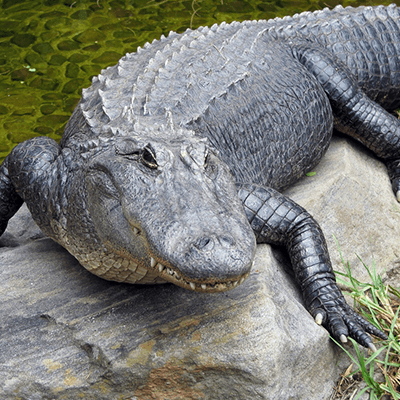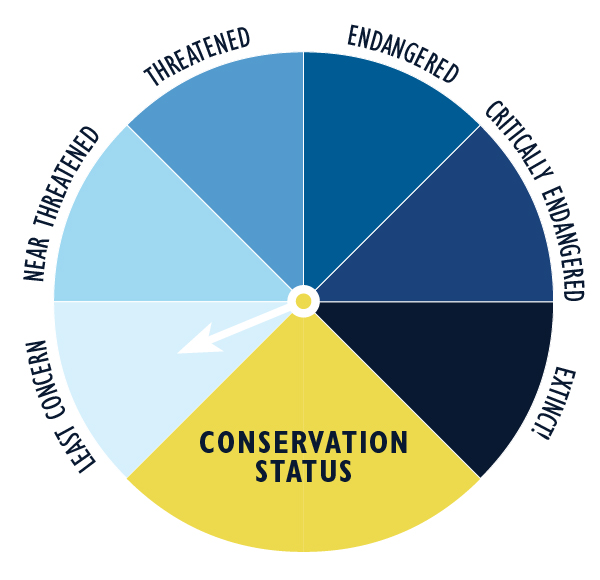
About American Alligator
Stop, chomp and roll… alligators are ambush predators. That means that they stay very still while they hunt, with their eyes and nostrils above water. When they get close to unsuspecting prey, they rush out of the water, grab their prey and roll to drown them underwater. Yikes! Alligators are cold-blooded, meaning their body temperature is determined by their environment.
Habitat
American alligators are found in the southern United States along the Atlantic coast and the Gulf of Mexico in freshwater swamps, marshes, lakes, and rivers. They also create burrows for shelter and hibernation during freezing temperatures.
Diet
Their diet consists of animals including fish, turtles, snakes, and small mammals.
Family Life
It’s not easy being a gator! They typically lay 35 – 50 eggs. Sadly, 80 percent of babies are eaten by predators including snakes, birds, raccoons, otters, large fish, and other alligators. Once they reach 4 feet long (1.2 meters), they are mainly preyed on by humans.
Conservation Status
The conservation status of the American Alligator is classified as least concern.
Threats
- Small, baby alligators are most susceptible to threats, as they are often the target of many natural predators. These predators include snakes, wading birds, osprey, raccoons, otters, large bass, garfish, even larger alligators will feed upon young alligators.
- Humans pose the largest threat to large alligators, as alligators skin is commonly used in the fashion industry.
Facts about American Alligator
Class:
Reptilia (reptiles)Order:
Crocodylia (crocodile)Family:
Crocodylia (crocodile)Genus:
Alligator (alligator)Species:
Alligator mississippiensis (American alligator)Life Span:
35 – 50 years (wild) / 65 – 80 years (zoo)Size:
Male: 13 – 14.7 ft (4 – 4.5 meters) / female: 9.8 ft (3 meters)Weight:
330 lbs
Fun Facts
- Alligator or a crocodile? Alligators are found in freshwater and have a U-shaped snout and crocodiles are found in saltwater and have a V-shaped snout.
- Alligators have been known to hold food in their mouth until it deteriorates enough to swallow.
- They have a specialized valve in the throat called a glottis, which allows them to capture prey underwater.
- It’s freezing in here! Alligators keep their nostrils just above the water’s surface during hibernations and the top of their body will freeze in the ice.











